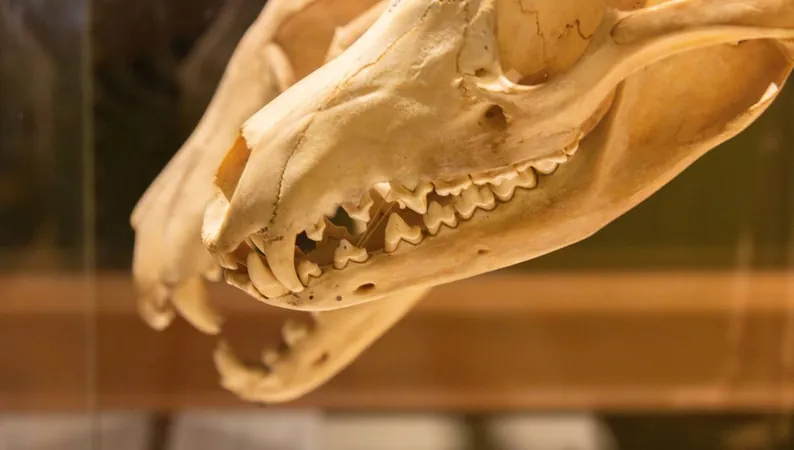
How Genetics Doomed the Tasmanian Tiger Long Before Humans Arrived
2025-08-28
Author: Wei
The Mysterious Decline of the Tasmanian Tiger
Once roaming the lands of Australia and New Guinea, the Tasmanian tiger, or Thylacine, was a unique marsupial characterized by its sandy fur and striking dark stripes. This formidable predator shared a lineage with the Tasmanian devil, but by the early 1800s, its population plummeted to around 5,000, thanks largely to the arrival of European settlers who disrupted its habitat.
Unraveling the Mystery of Extinction
The last known Thylacine passed away in 1936, leaving behind a lingering question: what really caused their extinction? Were humans and domestic dogs to blame, or was it something more insidious? New genomic research suggests that the Tasmanian tiger’s own genetics may have played a significant role in its demise.
Genomic Insights into Thylacine Decline
Researchers have tapped into palaeogenomic data of the Thylacine to compare it with other marsupials. Using advanced machine-learning tools, they discovered that the Tasmanian tiger lost four crucial genes—SAMD9L, HSD17B13, CUZD1, and VWA7—over a time span from 13 million to 1 million years ago, well before human interference.
A Genetic Legacy of Vulnerability
These gene losses are believed to have severe implications for the Thylacine’s health and adaptability. The lost genes were vital for immune function, particularly in fighting viruses and suppressing tumors. According to the researchers, this genetic erosion may have weakened the Thylacine’s overall fitness, leaving it more susceptible to environmental stressors.
The Role of Climate Changes and Diet Shift
The investigation linked the gene losses to significant climatic changes during the Middle Miocene, an era marked by major ecological shifts. As the environment changed, the Thylacine adapted to a more carnivorous diet, which may have inadvertently led to these genetic vulnerabilities.
Loss of Scent and a New Hunting Strategy
Interestingly, the study also revealed a reduction in the size of the Thylacine’s olfactory lobes, implying a shift from scent-based hunting towards relying on vision and sound. As these creatures grew in size, their ability to see over obstacles made visual hunting more feasible.
The Final Nail in the Coffin?
As researchers noted, while these evolutionary changes may have provided short-term advantages, they ultimately set the stage for the Thylacine's decline. The loss of critical genes led to health compromises that may have made the species more vulnerable to diseases, including a 'canine-distemper-like' illness that further exacerbated their extinction.
A New Framework for Understanding Extinction
This groundbreaking research not only sheds light on the tragic fate of the Tasmanian tiger but may also pave the way for new approaches in conservation genetics. By exploring gene loss in relation to extinction, scientists could uncover richer narratives about both extinct and extant species, enhancing our understanding of ecology and evolution.
The tale of the Tasmanian tiger serves as a haunting reminder of how genetics, environment, and evolution intertwine in the fate of species.

 Brasil (PT)
Brasil (PT)
 Canada (EN)
Canada (EN)
 Chile (ES)
Chile (ES)
 Česko (CS)
Česko (CS)
 대한민국 (KO)
대한민국 (KO)
 España (ES)
España (ES)
 France (FR)
France (FR)
 Hong Kong (EN)
Hong Kong (EN)
 Italia (IT)
Italia (IT)
 日本 (JA)
日本 (JA)
 Magyarország (HU)
Magyarország (HU)
 Norge (NO)
Norge (NO)
 Polska (PL)
Polska (PL)
 Schweiz (DE)
Schweiz (DE)
 Singapore (EN)
Singapore (EN)
 Sverige (SV)
Sverige (SV)
 Suomi (FI)
Suomi (FI)
 Türkiye (TR)
Türkiye (TR)
 الإمارات العربية المتحدة (AR)
الإمارات العربية المتحدة (AR)